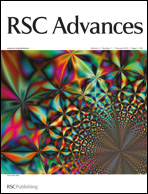A versatile method for enhancement of electromechanical sensitivity of silicone elastomers
Abstract
Dielectric elastomer actuators (DEAs) draw their function from their dielectric and mechanical properties. The paper describes the fabrication and various properties of molecularly grafted


 Please wait while we load your content...
Please wait while we load your content...